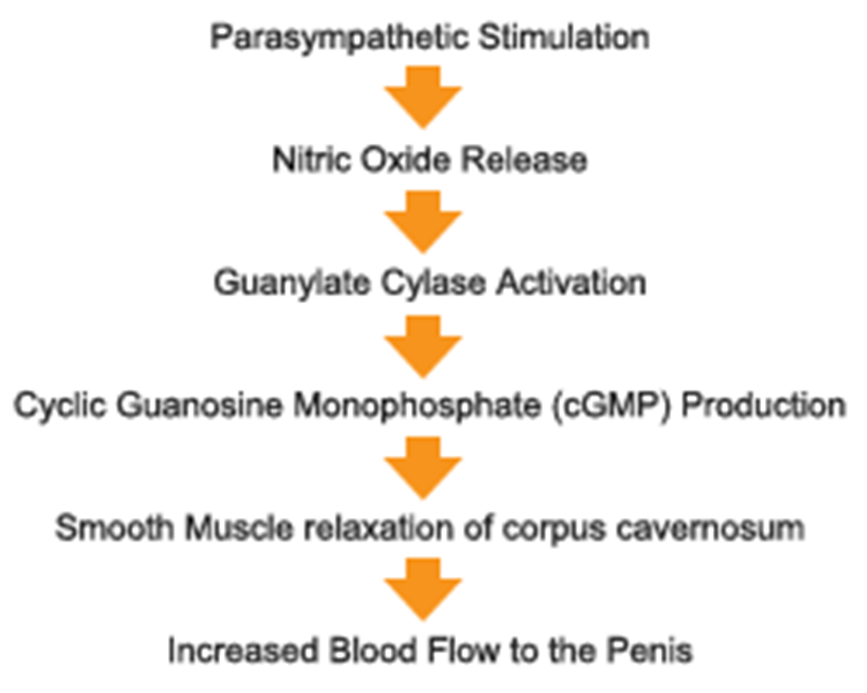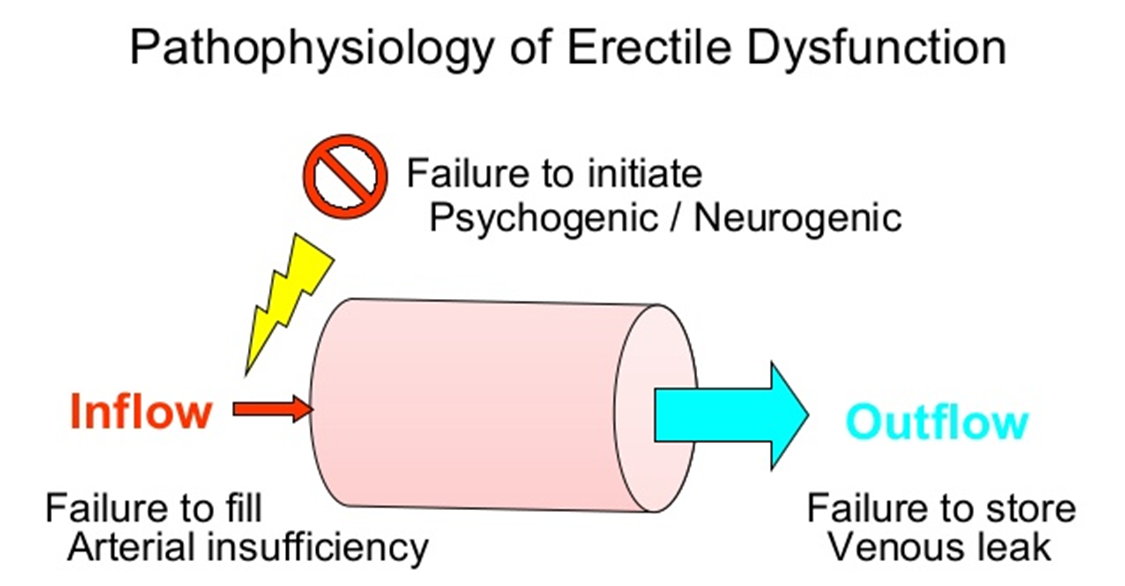Erectile Dysfunction
Content
- Erectile Dysfunction
- Definition
- Causes
- Pathophysiology
- Clinical Features
Objectives
At the end of this PDF Notes, students will be able to –
• Define Erectile dysfunction
• Explain the Pathophysiology of ED
• Describe the clinical features of ED
Erectile Dysfunction (ED)
Erectile dysfunction is defined as “the failure to achieve a penile erection to allow for satisfactory sexual intercourse”
Patients may refer to it as impotence
Main Causes of Erectile Dysfunction
Etiology of Erectile Dysfunction
- Psychogenic
- Vasculogenic : – Cardiovascular disease – Hypertension – Diabetes mellitus – Major surgery or radiotherapy (pelvis or etroperitoneum).
- Neurogenic Central causes – Multiple sclerosis – Parkinson’s disease – Tumors – Stroke – Spinal cord disorders( disc disease ) Peripheral causes – Diabetes mellitus – Alcoholism – Polyneuropathy – Surgery (pelvis or retroperitoneum).
- Anatomical/structural – Peyronie’s disease – Penile fracture – Congenital curvature of the penis
- Hormonal – Hypogonadism – Hyperprolactinemia – Hyper-and hypothyroidism – Cushing’s disease.
- Drug-induced – Antihypertensives (beta-blocker, thiazide and clonidine .less with ACE inhibitors ) – Antidepressants (tricyclic antidepressants and MAO inhibitor) – Antipsychotics – Antiandrogens – Antihistamines – Recreational drugs (Heroin and cocaine)
How Does Erection Normally Happen?
Process of Erection
Pathophysiology of Erectile Dysfunction
Any single abnormality or combination of abnormalities of the four systems necessary for a normal penile erection
• Vascular, neurologic, or hormonal etiologies of erectile dysfunction are collectively referred to as organic erectile dysfunction
• Patients who do not respond to psychogenic stimuli have psychogenic erectile dysfunction
• Diseases that compromise vascular flow to the corpora cavernosum (e.g., peripheral vascular disease, arteriosclerosis, and essential hypertension) increases incidence of ED
• Diseases that impair nerve conduction to the brain (e.g., spinal cord injury or stroke) or conditions that impair peripheral nerve conduction to the penile vasculature
• Diseases associated with hypogonadism, primary or secondary, result in subphysiologic levels of testosterone, which cause diminished sexual drive (decreased libido) and secondary erectile dysfunction
• Vasoconstrictor effect of cigarette smoking may compromise blood flow to the corpora and decrease cavernosal filling
• Excessive ethanol intake may lead to androgen deficiency, peripheral neuropathy
Clinical Presentation of Erectile Dysfunction
Summary
• Erectile dysfunction is defined as “the failure to achieve a penile erection to allow for satisfactory sexual intercourse”
• It can occur due to various causes like psychogenic, vasculogenic and neurogenic
• Failure to initiate psychogenic or neurogenic impulse or failure to increase arterial blood pressure may result in ED
• ED may ultimately lead to impotence






1 thought on “Erectile Dysfunction – B. Pharma 2nd Semester Pathophysiology notes pdf”